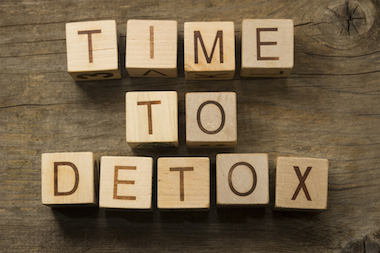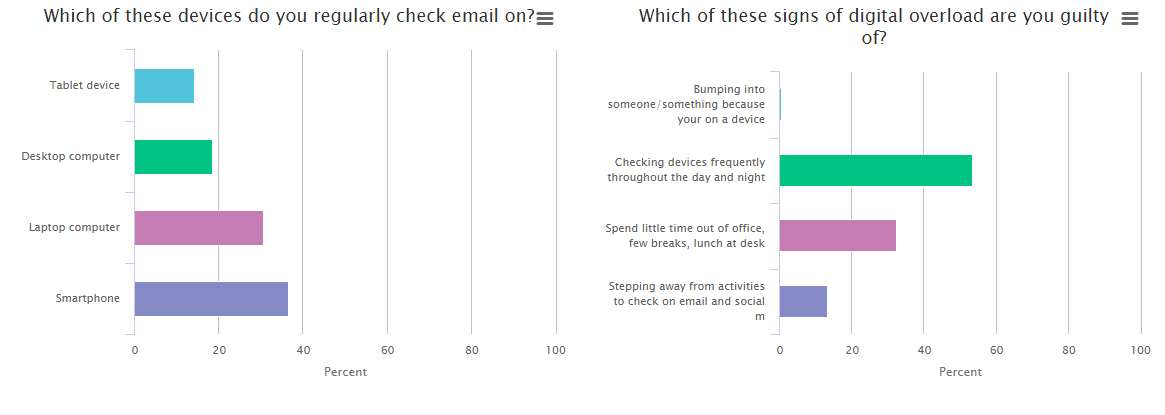Digital Detox: How to switch off in a 24/7 world

Internet addiction causes depression, burnout and mental health issues in many workplaces, but is a “digital detox” a realistic option for employees?
Matthew Rock
Many years ago, in 1996, I interviewed Michael Dell, the billionaire founder of Dell Computers. We were sat in a grand room in the Institute of Directors on London’s elegant Pall Mall.
It was the early days of the internet, and I was intrigued to hear Dell talk about how he checked his emails late at night to stay in touch with colleagues around the world. If he was away from the internet for too long, he said, he began to suffer from “bandwidth separation anxiety”.
Michael Dell is a Geek Overlord and he was among the first to experience such feelings.
Today, those symptoms of internet addiction are common across the world.
A tsunami of information overwhelms us every day, leaving tens of millions tied to their devices at all hours. Created to boost productivity, smartphones are becoming weapons of mass distraction.
The fear of missing out, of not being “in the loop” when key decisions are made, the impact on delicate egos of not being liked or followed – all these factors mean that employees and managers live in a permanent and desperate frenzy of trying to stay connected.
Many organisations play to these fears. If the high performers in your company are always online, responding to emails and messages instantly, no matter what time of day or night, then it’s hard not to fall in line and join the undead.
Careers and lives might even depend on it. Many businesses use performance-tracking data as a management tool: if team members don’t rank highly on speed, accessibility and response times, then they’ll soon be tumbling down the leaderboard and, in the end, be shown the door.

It may seem impossible to resist this tide but, as was discussed in a CMI/Citrix GoToMeeting webinar this week, there’s more and more scientific evidence – as well as business common sense – to suggest that managers must begin reducing employees’ internet addiction.
Anxiety, depression and mental health disorders are rampant across the modern working world.
A 2014 YouGov/Microsoft survey found that 43% of 2,000 employees surveyed experienced stress from having to deal with too much information at work, with 34% saying that they felt ‘overwhelmed’.
“The likelihood of diabetes, heart disease and even depression are all increased in populations that spend large amounts of time sitting for extended periods of time,” says Vivien Hudson, founder of Brain, Body, Business.
David Smith, co-founder of Virtual Gurus and digital fluency lead at TMA World, describes himself as “a fanatical digital worker”, yet he’s deeply concerned about the mental health implications of modern working patterns. He points to World Health Organization research that says that a sedentary lifestyle is the fourth-largest global health issue, ahead even of obesity. “Sitting is the new smoking,” he says.
He also believes that digital detoxing is essential: “I actually wonder if it is us that ‘self impose’ the belief that we should be always connected and available – just because other colleagues are does not mean that we should!
“Are we likely to be overlooked for a promotion because we are not constantly connected? I think not. What is vital is that we produce the right level/quality of work that our organisation/manager expects, not that we are available at all hours of the day.
“If it is our organisations that are imposing that belief, then they need to recognise that we cannot be available 24/7 without there being consequences – burnout, anxiety, depression or worse.
“Many organisations are introducing wellbeing programmes into their agenda – and they need to: the 21st century knowledge worker is in need of some TLC.”
So how can managers help employees to unplug from their devices and reduce the risks of burnout? Here are a few tips:
- Apply the Pomodoro Technique; the time management method developed by Italian Francesco Cirillo that uses the tomato-shaped Pomodoro timer to break work into 25-minute intervals, separated by short breaks.
- Ironically, there are apps to remind you to take breaks, and the Apple Watch will tap you with a reminder.
- Use “Out of Office”: this tool has been pushed into the long grass recently, but it’s still an effective ways of buying yourself some space and time when you want to be offline.
- Go analogue, regularly; using paper, whiteboards and other analogue tools activate different parts of your brain and will put you into a refreshed frame of mind.
- Set up a company running club or walking group so that you and colleagues get out of the office and into the fresh air. These are increasingly popular and more people will join once they’re up and running, including senior managers, directors and partners. Gradually, these clubs will shift the organisation’s culture to one where offline breaks and digital detoxing is encouraged, not frowned upon.
For many more ideas about digital detoxing, listen to the CMI/Citrix GoToMeeting webinar: Why Digital Detoxing is Essential in 2015 or follow David Smith on Twitter
The latest CMI report in the long-running Quality of Working Life research series explores the impact of organisational change and long working hours on management motivation and productivity.

Press & Media Enquiries
For more information or to request interviews, contact CMI's Press Team on 020 7421 2705 or email press.office@managers.org.uk


